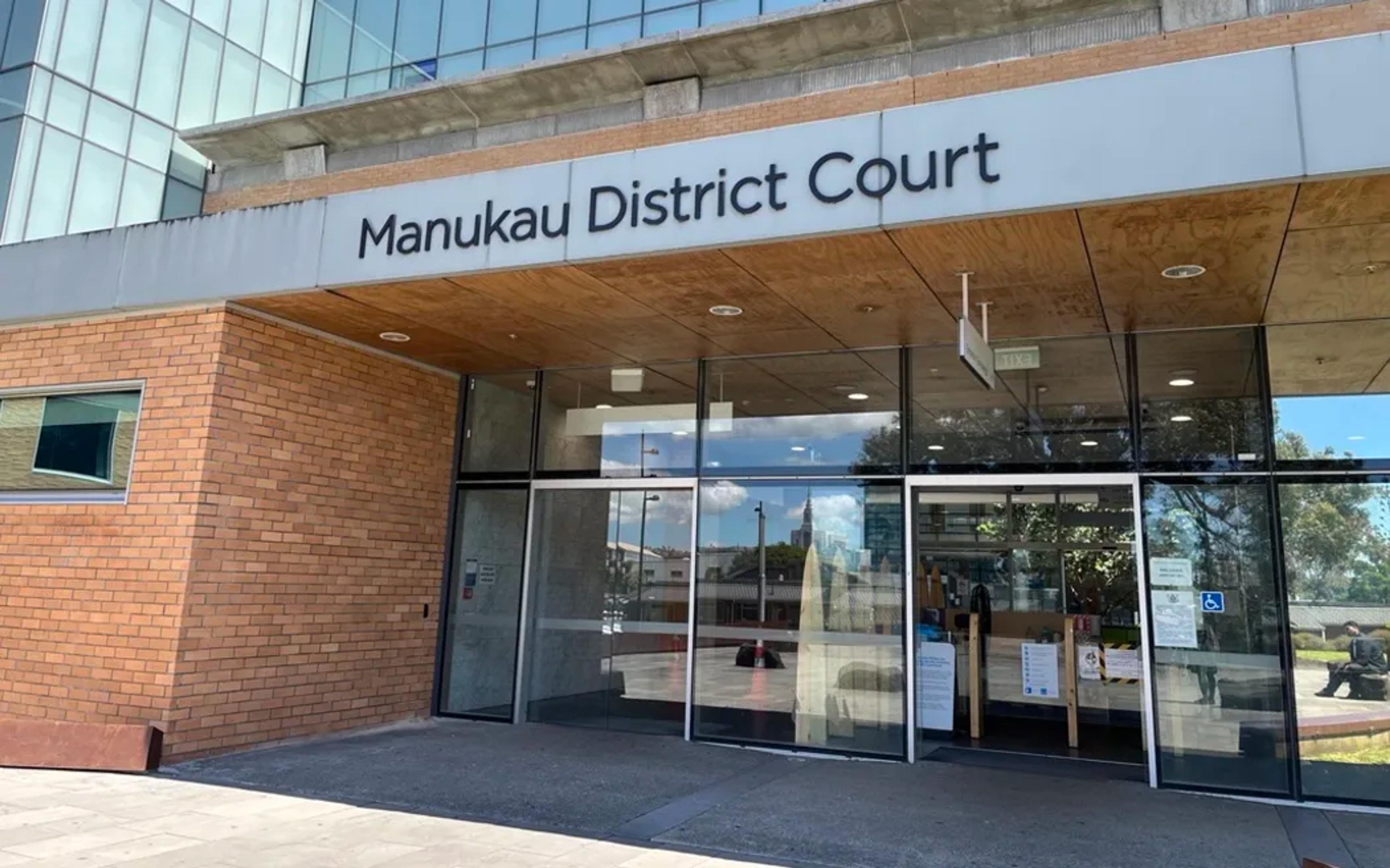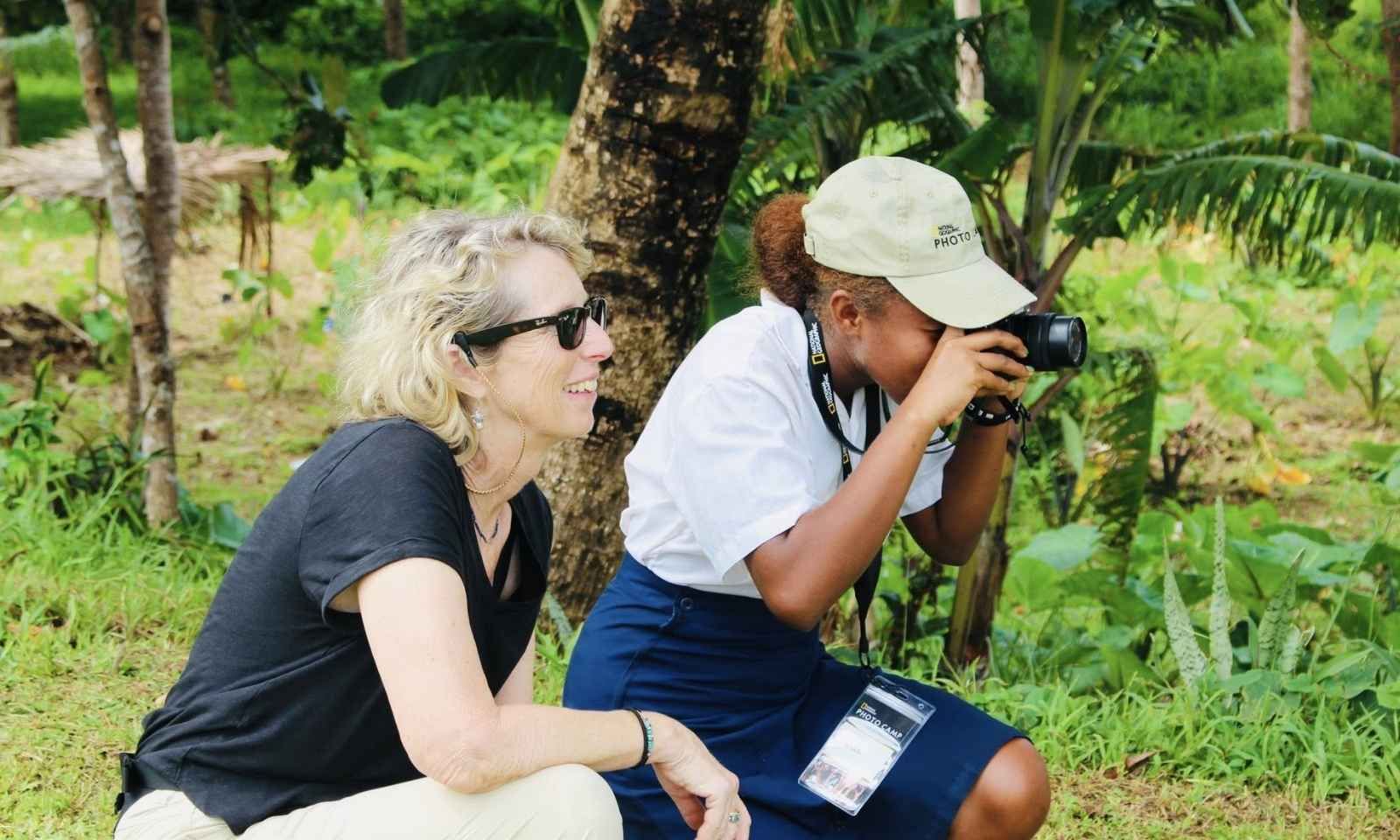

Some Lini Memorial College students on the second day of the National Geographic Photo Camp’s workshop.
Photo/Facebook/Lini Memorial College
Vanuatu students use photography to honour their heritage and protect the ocean
National Geographic’s Photo Camp gave Pentecost Island youth the tools to combine art, culture, and conservation, reflecting pride in their ancestors’ ocean stewardship.


‘A man so full of love’: Fepulea’i awarded comedy Topp Prize

Pacific health leaders warn cancer surge looms: ‘Early action cannot afford to wait’


US warns Fiji over human trafficking concerns linked to Grace Road Group

‘A man so full of love’: Fepulea’i awarded comedy Topp Prize

Pacific health leaders warn cancer surge looms: ‘Early action cannot afford to wait’

A group of 12 students from Vanuatu’s Lini Memorial College have joined National Geographic’s Photo Camp, gaining hands-on storytelling experience through photography and ocean conservation.
Photo Camp has spent more than two decades empowering young people across the world to tell their stories through photography. Recently, the team travelled to Laone Village on Pentecost Island, Vanuatu, for a five-day workshop that connected students from Lini College with the global Pristine Seas expedition.
During the camp, students photographed coral reefs, interviewed elders, and captured scenes from everyday village life. They also wrote reflections on how their ancestors’ conservation practices have shaped today’s marine protection areas.
One participant, Lorance Batena, says their elders want the next generation to learn about how the ocean is conserved and how they are connected to the environment. Batena says protecting the sea means acknowledging their responsibility to protect and respect the ocean.
“When we make this Tabu [sacred or protected] area in our ocean, that means we can’t dive, hunt or fish here. It means we are protecting our ancestors, our identity and our future,” Batena says.
“After the protected area is conserved for more than five years, the villages are allowed to fish there again. They exchange red mats with the chief. These things were practised in the past during our ancestors’ time, until today and also for the future generations to come.”
The Vanuatu workshop was the first time Photo Camp partnered with National Geographic’s Pristine Seas, whose team just concluded a month-long marine expedition across the country.
The Vanuatu mission aims to support the government’s National Ocean Policy by documenting the country’s marine biodiversity and working with local communities to strengthen marine protection.
Kirsten Elstner, Photo Camp founder and National Geographic Explorer in Residence, says Laone Village has maintained locally protected areas for generations. She says the Photo Camp accompanied Pristine Seas’ scientific purpose well.

Kirsten Elstner (left) with a student. Photo/Facebook/Lini Memorial College
“So the photo camp itself was kind of a celebration of the youth perspectives on the successful protection of the ocean environment and marine resources that have been happening,” Elstner says.
“For the students [it was] a chance to not only share their own perspectives and photography, but also for them to do some interviews, some writing and portraiture with their elders, to learn more about how that process has unfolded over the years.”
The camp ended with a public presentation, or “final show”, attended by over 300 people, including students, parents, and surrounding villages. Certificates from the National Geographic Society were awarded to the students.

Underwater photos by students on shared cameras. Photo/National Geographic Photo Camp
“Then we played a slideshow of their work and that highlighted not only the photographs that they had made, but we recorded one of the students reading his essay that he had written as part of the workshop.
“The communities and students [sang], which we had recorded as well. So that was all part of the final presentation along with dancing, traditional dancing, ceremony and food that I think 50 of the students were involved in creating these beautiful dishes of food for us and the community. It was quite a final presentation. It's one I'll never forget.”
To ensure a lasting impact, the Photo Camp team donated cameras to the school and helped establish a “Storytellers Club” so more students could learn photography. Since founding Photo Camp in 2003, Elstner has led workshops in more than 35 countries, designing over 145 programmes to help young people “see the power of their own voices”.
That approach has created lasting change in places like Aotearoa New Zealand, where Photo Camp previously partnered with Air New Zealand to host workshops in Māori and Pacific communities between 2019 and 2023.
Elstner says Photo Camp has been an experience that has shaped her as much as the students. She says most of her life and career have been spent on listening to youth, which is a crucial part of Photo Camp.
“I was a pretty positive person to begin with, but I have become even more hopeful, after years of just being with and trying to understand young people. Seeing their motivation and determination to make the world a better place. They’re all looking for the same things that we all are, to try to educate themselves, help their families, be in community.”
She also thanked the ni-Vanuatu communities for trusting the Photo Camp team with their young people, trusting the programme and for their warm welcome.
“I honestly have never felt more welcomed into such a warm and giving community as when we arrived on the first night and they had a ceremony, dance and song prepared for us. Then having the opportunity to work with those young people and to celebrate them.
“We were hosted by families, they fed us, they took such good care of us. So I just really want to say thank you to the ni-Vanuatu community for that.”